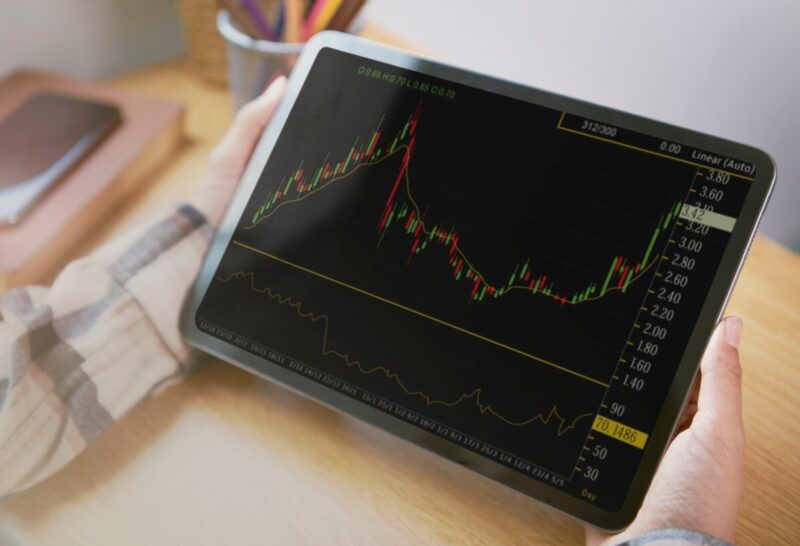Day trading often comes with an air of mystery, especially around how much you actually need to get started. Some believe it’s a game for the rich, requiring tens of thousands to even try. Others think you can turn a few dollars into massive profits overnight. Both ideas miss the mark. The truth is more nuanced, shaped by your goals, the markets you trade in, and the tools you choose.
Whether you’re a curious beginner or someone eyeing day trading as a serious income stream, understanding the actual costs is crucial. Let’s clear the confusion and look at what it takes to enter the world of day trading without unnecessary myths clouding your path.
Key Points:
- Day trading doesn’t require a fortune to start.
- Small investments can build experience and skills.
- Regulations influence the minimum amount needed.
- A proper strategy minimizes risks and maximizes returns.
- Knowledge and discipline outweigh initial funds.
Myths About Day Trading and Initial Investments

Starting with day trading can feel overwhelming due to misconceptions about needing massive sums of money to participate. People often assume it’s a playground for the wealthy or for seasoned financial experts. This belief deters many aspiring traders from taking their first step. However, the reality is that accessible platforms, such as Binomo, provide opportunities to begin trading with as little as $10. With features like demo accounts and user-friendly interfaces, these platforms enable anyone to explore trading without risking large amounts.
How Much is Enough to Start?
The amount required to begin depends on several factors, including your objectives, the market you wish to enter, and regulatory requirements in your region. For instance, the SEC’s Pattern Day Trader (PDT) rule in the US mandates a minimum of $25,000 for active day trading in a margin account. However, beginners outside the US or those trading in cash accounts can start with significantly less.
Factors Influencing the Starting Amount:
- Platform Requirements
Each trading platform has unique minimum deposit rules. Many allow accounts to open with as little as $10-$100. - Market Access
Some markets, such as forex or cryptocurrencies, have low barriers to entry. Others, like stocks, may require more capital. - Risk Tolerance
For beginners, starting small is wise. It limits potential losses and allows for learning at a manageable pace. - Goals
Casual trading requires less money compared to pursuing it as a full-time career or significant income source.
Starting amounts vary widely, so evaluate your resources and goals carefully before deciding how much to allocate.
Common Misconceptions About Day Trading Costs

Myths about trading can discourage beginners or mislead them into making poor financial decisions. Let’s debunk a few:
- You Need Thousands to Start
A widespread belief is that trading requires a hefty savings account. Micro-trading, fractional shares, and beginner-friendly platforms make it possible to enter the market with a modest sum. - It’s All About Money
Capital is important, but without the right skills, even a large account can be depleted. Experience and strategy are far more valuable than a large starting balance. - Low Budgets Can’t Profit
Even with small amounts, consistent, disciplined trading can grow your account over time. Strategies like scalping or focusing on high-probability trades can make a difference.
Understanding these misconceptions helps set realistic expectations, a crucial step toward long-term success.
Creating a Realistic Budget
Creating a budget tailored to your trading needs ensures sustainability and reduces the risk of overextending yourself financially. A clear plan will also help you allocate funds for tools, fees, and potential losses. Here’s a simple breakdown:
| Expense | Estimated Cost |
| Initial Deposit | $100-$500 |
| Transaction Fees | $0-$10 per trade |
| Educational Resources | Free-$100 |
| Risk Capital for Losses | $50-$200 |
Allocating funds properly reduces stress and helps you focus on developing your skills rather than worrying about losses.
What Tools and Accounts Suit Beginners?
Beginners should choose tools and accounts that simplify the process and help reduce risks. Some accounts have no minimum deposit requirements, while others offer educational resources like demo accounts to practice trading strategies.
Beginner-Friendly Options:
- Forex Accounts
These often require the smallest deposits, sometimes as low as $10. - Crypto Exchanges
Crypto markets are accessible 24/7, making them appealing for newcomers who want flexibility. - Demo Accounts
These allow you to simulate trades with virtual funds, offering valuable practice without risking real money.
The right tools and accounts create a foundation for learning and eventual success.
Rules for Beginners: Where to Spend and Save
Efficient budgeting isn’t just about how much you invest; it’s about how you allocate funds wisely. Follow these rules to avoid unnecessary expenses:
- Invest in Learning
Quality courses, books, and mentorships provide critical insights and enhance your decision-making skills. - Skip Costly Tools
Beginners don’t need premium charting software or advanced analytics. Free tools are often sufficient in the early stages. - Choose Low-Fee Platforms
Trading platforms with high transaction fees can drain your account, especially if you trade frequently. Look for platforms with minimal fees to maximize your returns. - Test Strategies
Before committing real funds, test your strategies in a demo account. This minimizes risk and improves your confidence.
Efficient spending focuses on knowledge and skill-building rather than expensive tools or unnecessary add-ons.
Managing Risks in Day Trading
Day trading involves inherent risks, but proper risk management reduces losses and increases the chances of success.
Key Risk Management Tips:
- Trade only 1-2% of your account balance per transaction.
- Use stop-loss orders to cap losses on individual trades.
- Diversify across markets or assets to avoid overexposure.
Success in trading isn’t just about making money—it’s about preserving what you have during rough periods. Discipline in managing risks separates successful traders from the rest.
Is Day Trading Worth the Risk?

The answer depends on your mindset and willingness to learn. While day trading isn’t a get-rich-quick scheme, it can yield significant returns when approached with patience and discipline. For many, the appeal lies in the flexibility and the potential to build an income stream on their own terms.
Focus on realistic goals and take the time to improve your skills before aiming for large profits. The learning curve is steep, but the rewards can be worth the effort.
Final Thoughts
Starting day trading doesn’t demand a fortune. With platforms that accommodate small deposits and provide educational resources, it’s easier than ever to begin. Success requires strategy, discipline, and continuous learning. Whether starting with $100 or $25,000, the key lies in managing risks and refining your skills. Begin with a clear plan and realistic expectations to navigate the markets confidently.


